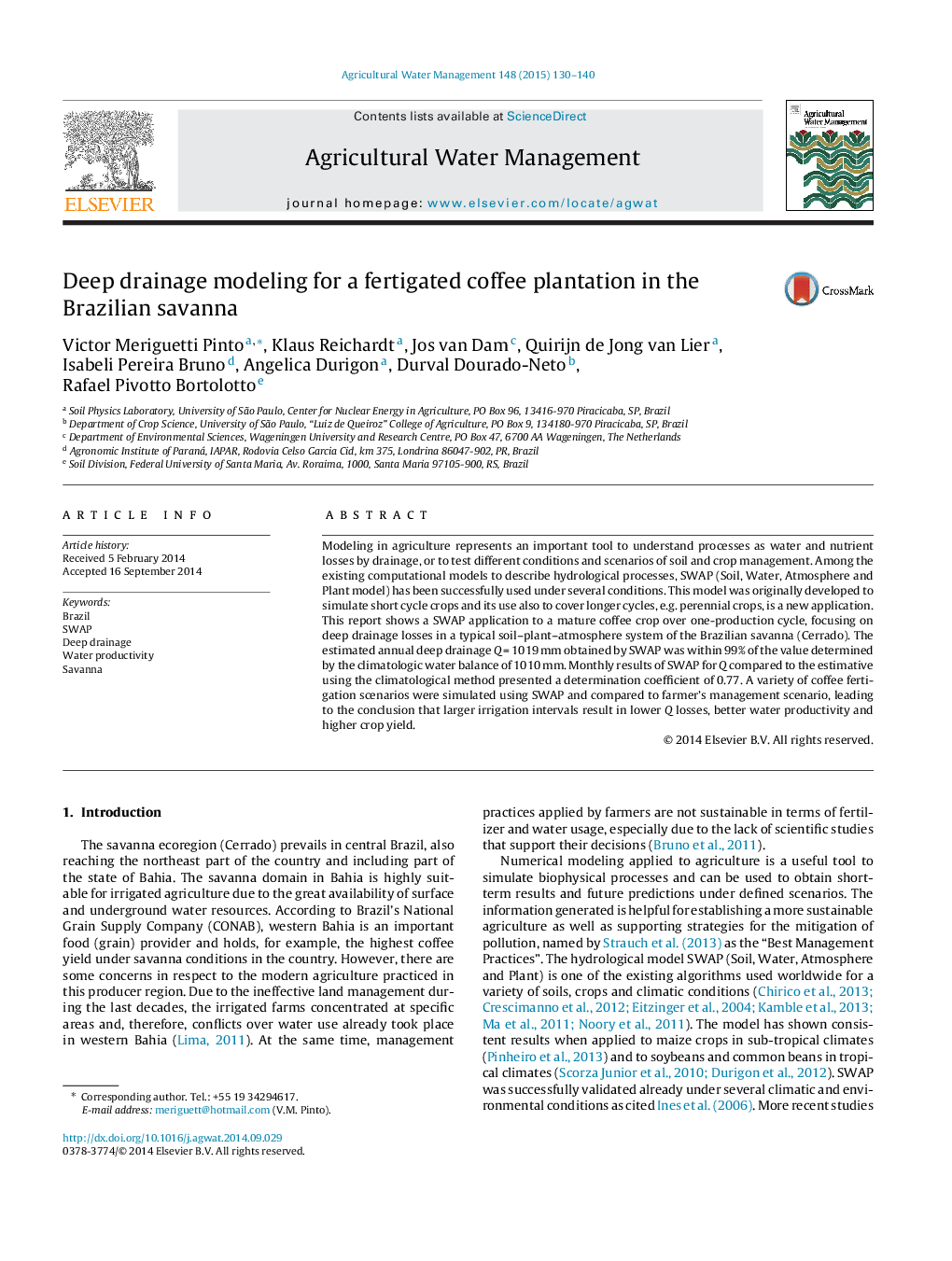| Article ID | Journal | Published Year | Pages | File Type |
|---|---|---|---|---|
| 6363810 | Agricultural Water Management | 2015 | 11 Pages |
Abstract
Modeling in agriculture represents an important tool to understand processes as water and nutrient losses by drainage, or to test different conditions and scenarios of soil and crop management. Among the existing computational models to describe hydrological processes, SWAP (Soil, Water, Atmosphere and Plant model) has been successfully used under several conditions. This model was originally developed to simulate short cycle crops and its use also to cover longer cycles, e.g. perennial crops, is a new application. This report shows a SWAP application to a mature coffee crop over one-production cycle, focusing on deep drainage losses in a typical soil-plant-atmosphere system of the Brazilian savanna (Cerrado). The estimated annual deep drainage QÂ =Â 1019Â mm obtained by SWAP was within 99% of the value determined by the climatologic water balance of 1010Â mm. Monthly results of SWAP for Q compared to the estimative using the climatological method presented a determination coefficient of 0.77. A variety of coffee fertigation scenarios were simulated using SWAP and compared to farmer's management scenario, leading to the conclusion that larger irrigation intervals result in lower Q losses, better water productivity and higher crop yield.
Related Topics
Life Sciences
Agricultural and Biological Sciences
Agronomy and Crop Science
Authors
Victor Meriguetti Pinto, Klaus Reichardt, Jos van Dam, Quirijn de Jong van Lier, Isabeli Pereira Bruno, Angelica Durigon, Durval Dourado-Neto, Rafael Pivotto Bortolotto,
